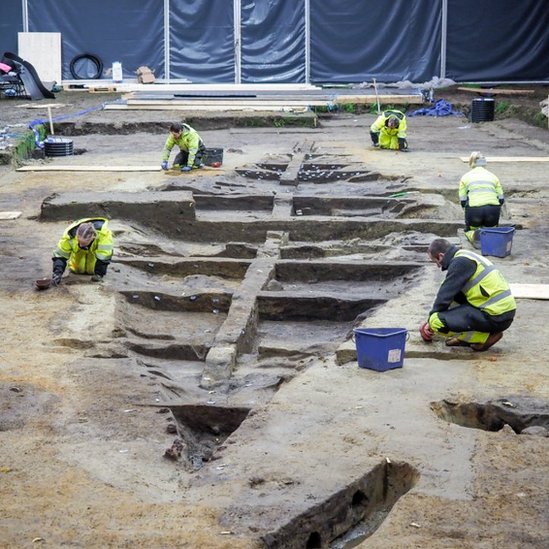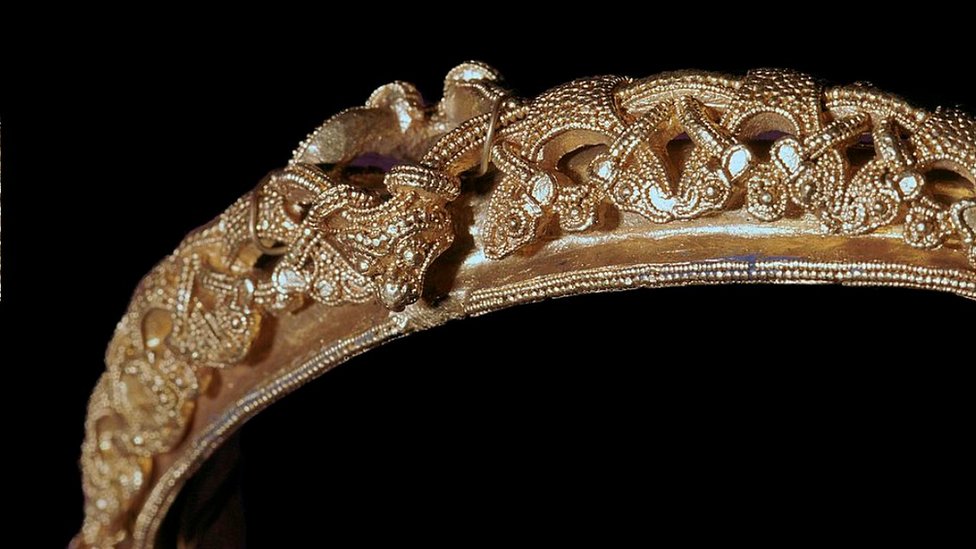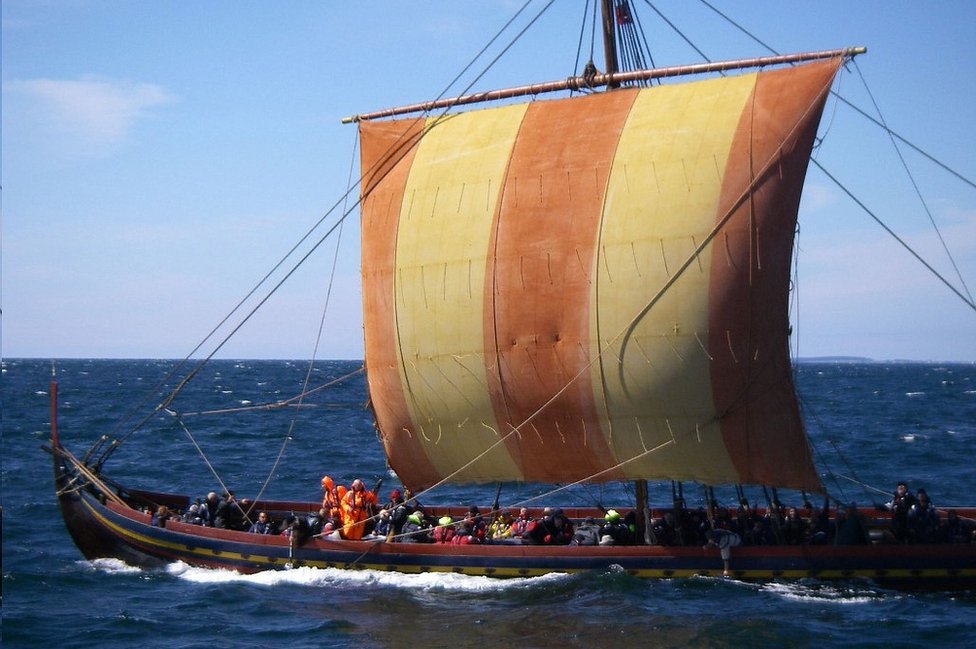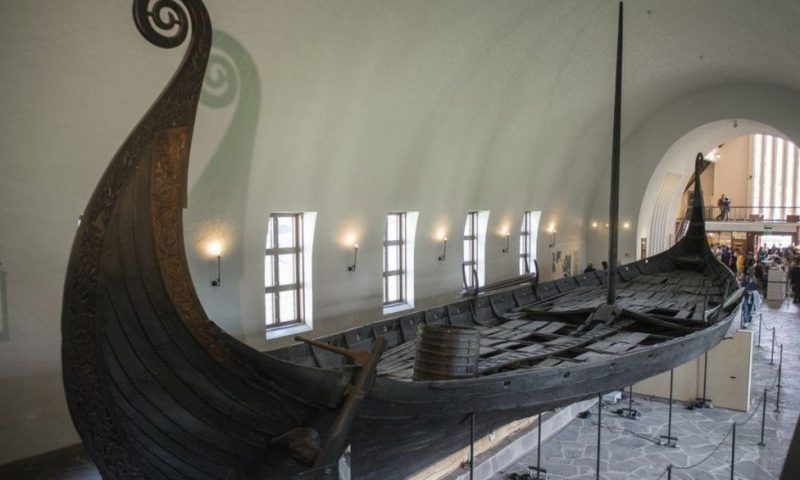Pyramids, castles, palaces: symbols of power and status have taken many forms down the ages, and for the Vikings what really counted was the longship.
This month Norwegian archaeologists hope to complete their excavation of a rare, buried longship at Gjellestad, an ancient site south-east of Oslo. It is the first such excavation in Norway for about a century.
Most of the ocean-going ship has rotted away over the centuries, but archaeologist Dr Knut Paasche believes the layout of the iron nails will still enable a replica to be built eventually.
Ground-penetrating radar (GPR) revealed it to be about 19m (62ft) long and 5m (16ft) wide – putting it on a par with the well-preserved Oseberg and Gokstad Viking ships on display in Oslo.
Those ships were found on the western side of the wide Oslo Fjord.
In the 9th Century the Vikings started using sails, but they still needed strong rowers too for their epic voyages.
In their longships they travelled all around the British Isles, raiding coastal communities, then settling and leaving a legacy of fine craftsmanship, as well as Norse words and names.
The Norse Vikings ventured to Iceland and some then settled in Greenland and Vinland in North America – what later became Newfoundland.
The Gjellestad warrior longship dates from the pre-Christian Viking period 750-850 AD, Mr Paasche of the Norwegian Institute for Cultural Heritage Research (Niku) told the BBC.
“We don’t yet know if this was a rowing or sailing ship. Others, like the Gokstad and Tune ships, combined rowing and sailing,” he said.
Study of the keel will be crucial and, he said, “the keel looks very different from the others, which is really exciting”.
“On the coast it’s hard to use a sail, the wind changes all the time, so you would often row a ship. But to cross, say, from Bergen to Shetland it was better to wait for the right wind.”

Gjellestad is a big burial site, with as many as 20 graves and Jell Mound, which dates back to the Roman Iron Age (1-400 AD). That mound, the second-biggest in Norway, is 100m from the ship grave, which itself used to be a mound.
Excavation leader Prof Christian Rodsrud says Jell Mound marks the site of an ancient cremation burial, but hardly anything was found inside. It may have been looted at some point.
Ploughing by farmers in the 19th Century levelled the mound over the nearby ship and other burial mounds.
There are also remains of long halls, probably used for ceremonies and feasts that went on for days. It was a time of power struggles between feuding Viking chieftains.
Grave as a mark of nobility
Prof Rodsrud told the BBC that “the ship clearly relates to the older graves and especially the large Jell Mound – it is clear that the Vikings wanted to relate to the past”.
The ship burial could have been for a king, queen or jarl, he said. Jarls were noble warriors – the Anglo-Saxon equivalent was an earl.

Unlike this prestigious landmark, much smaller boat burials were common among the Vikings.
So far the team have found bones from a large animal – probably a horse or bull – in the ship grave, but no human bones.
There are signs that well-organised robbers removed grave artefacts, pointing to a political act intended to “affirm dynastic power”, a research paper about the site says.
At that time the coast was closer – about 500m away. There was a sheltered bay, making the site easily accessible by sea. Norwegian research shows that sea levels were then as much as 6.5m higher than today in the region.
“I’m sure this society had contacts far away, and the person buried in the ship might have travelled long distances,” said Prof Rodsrud of Norway’s Museum of Cultural History. The Vikings traded far and wide – famously with Byzantium, now Istanbul.
What made Viking ships special?

It was a seafaring culture: they perfected navigational skills without needing instruments like the astrolabe used by the Arabs.
That reliance on boats was a direct result of Norway’s geography: mountains and fjords with few usable roads, and a twisting coastline, thousands of kilometres long.
Hundreds of ships were used by the Vikings, Mr Paasche said, and the crews gained intimate knowledge of the weather, sea conditions and marine animals. “Out fishing from Bergen on a good day you could see the Faroe Islands, and from there you could see Iceland.”
The ships had overlapping oak planks – a style called Nordic clinker – with tar waterproofing.
The construction was light, so the ships could be carried ashore. Inside, there were moveable pine fittings – a Scandinavian tradition dating back far beyond modern flat-pack furniture.
“The Vikings moved with the sea, not against it. The shallow draught enabled a wave to go under the ship and lift it,” Mr Paasche said.
That shallow draught also let the Vikings sail far inland in shallow waters – a key advantage in their many conquests.

